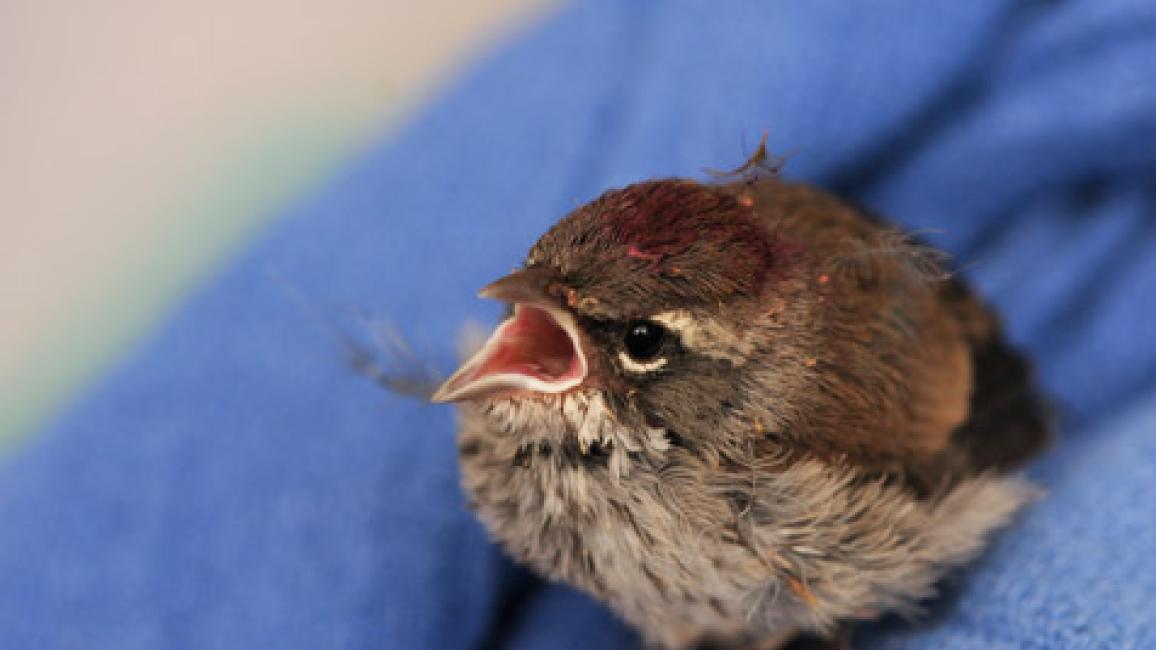Caring for 166 wildlife at Best Friends Animal Sanctuary

It has been the busiest year so far at Wild Friends, with the first half of the year seeing 166 wild patients admitted for care, enough to keep the Wild Friends staff on their toes.
Lots of little squirrels
Eleven squirrels have been rehabilitated and released back to the wild. A mom and four babies had caught a bad case of mange in their damp den underneath a house. The babies were adorable, but very unwell. Mange can be tough to cure, but after a few weeks of treatments, they have a clean bill of health and are back out in the wild again.
Five other baby squirrels were kept by a well-meaning person in a bathtub for a week. Of course, a bathtub isn’t a natural habitat for baby squirrels. They need a place where they can find hiding spaces, get out for exercise and develop their survival skills. They need a proper diet, too. After a couple of weeks of care at Wild Friends, they’re all fine and have been released into a wonderful brush pile that is perfect for squirrels.
A sixth squirrel, who’d been caught by a cat and had taken a bit longer to get his health back, has now joined them in the wild.
Volunteer wildlife transporter
Tim Tyler arrived at the Sanctuary a couple of years ago to volunteer, and he has been delivering wild patients to Wild Friends ever since. Sometimes rescuers can transport the bird or animal themselves, but this isn’t always possible. Tim’s transport is lifesaving for many animals since time is of the essence in getting them to a rehabilitation center like Wild Friends.
Tim calls people back to let them know their rescued birds or animals have arrived safely. He also offers helpful tips on keeping wild patients quiet and unstressed, lets people know not to feed them or give them water (which can do more harm than good), and explains the importance of calling Wild Friends right away about an injured animal (the sooner the better). Lots of wild birds, bunnies, squirrels and other animals owe their lives to his prompt volunteer transport service.
A splint for a sparrow
Steve, a volunteer with Best Friends community cat program in nearby Colorado City, was able to drive an orphaned nestling house sparrow to Wild Friends. (House sparrow is the name of the species, which used to be called the English sparrow.) The little baby’s leg was broken right above the ankle. No one knew quite how the accident happened. Maybe she fell out of her nest and was found by a kind person.
It’s tricky caring for a baby bird’s broken leg when the bird is still growing. Even without accidents, a baby bird’s legs can develop problems.
Carmen Smith, manager of Wild Friends and licensed wildlife rehabilitator, managed to improvise, applying a splint made out of a tiny one-quarter-inch piece of a drinking straw fastened onto the leg with paper tape. The splint has been on for a week and a half now, and the baby is doing great, fast turning into a fledgling.
Too young to be housed with 10 older rescued sparrows, she’s in with two new friends – a house finch, who had been caught by a cat but who is now doing well, and a very shy baby sparrow, who was a bit of a late starter, but is now fine and self-feeding. The three enjoy perching on a twig, looking out at the world.
How to contact Wild Friends
If you come across wildlife that may need help, Wild Friends (435-644-2001 ext. 4460) can refer you to a licensed wildlife rehabilitator near you.
Find out more about wildlife rehabilitation at Best Friends Animal Sanctuary.
Photo by Molly Wald